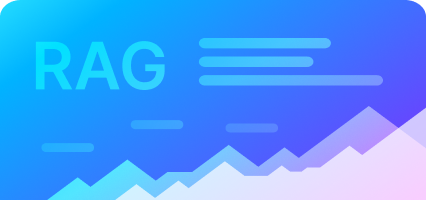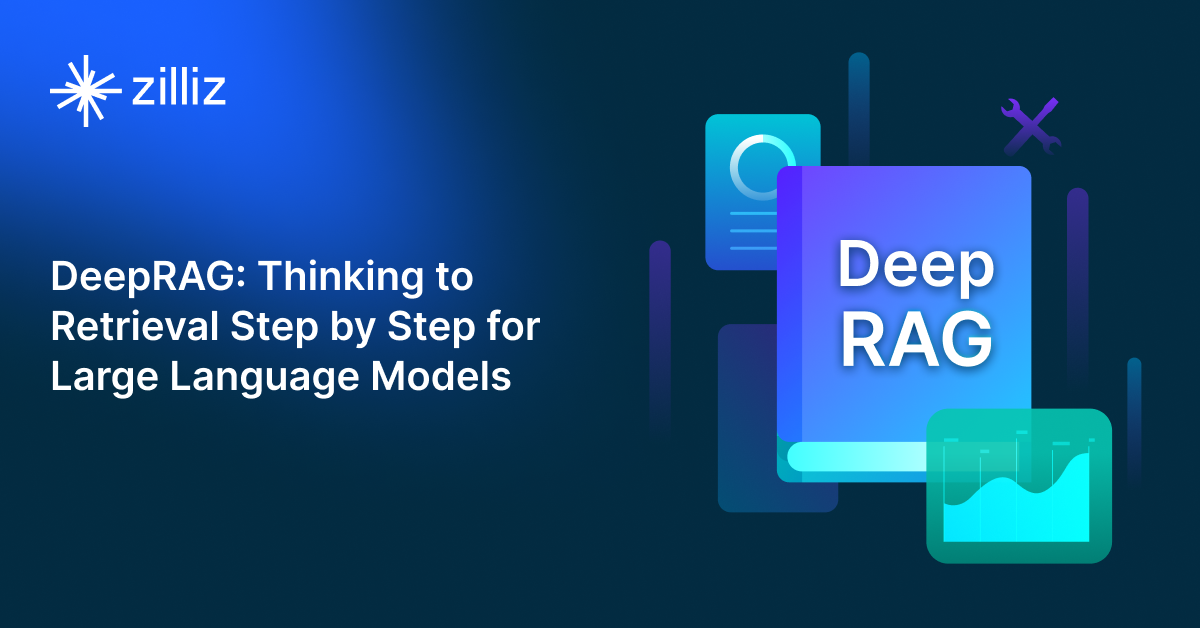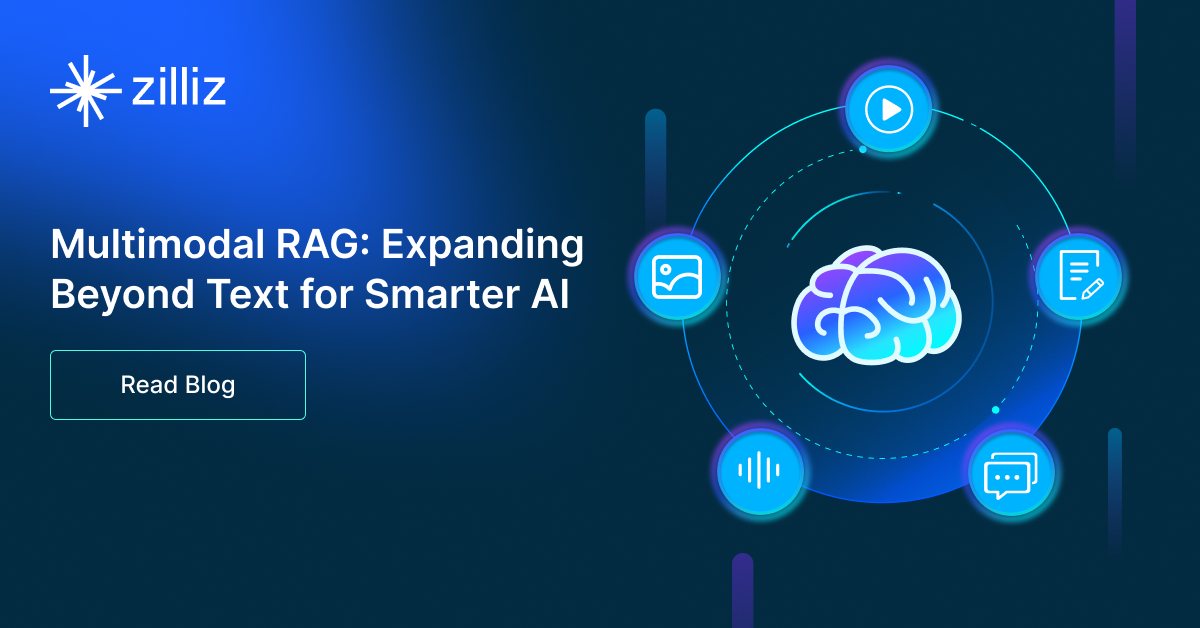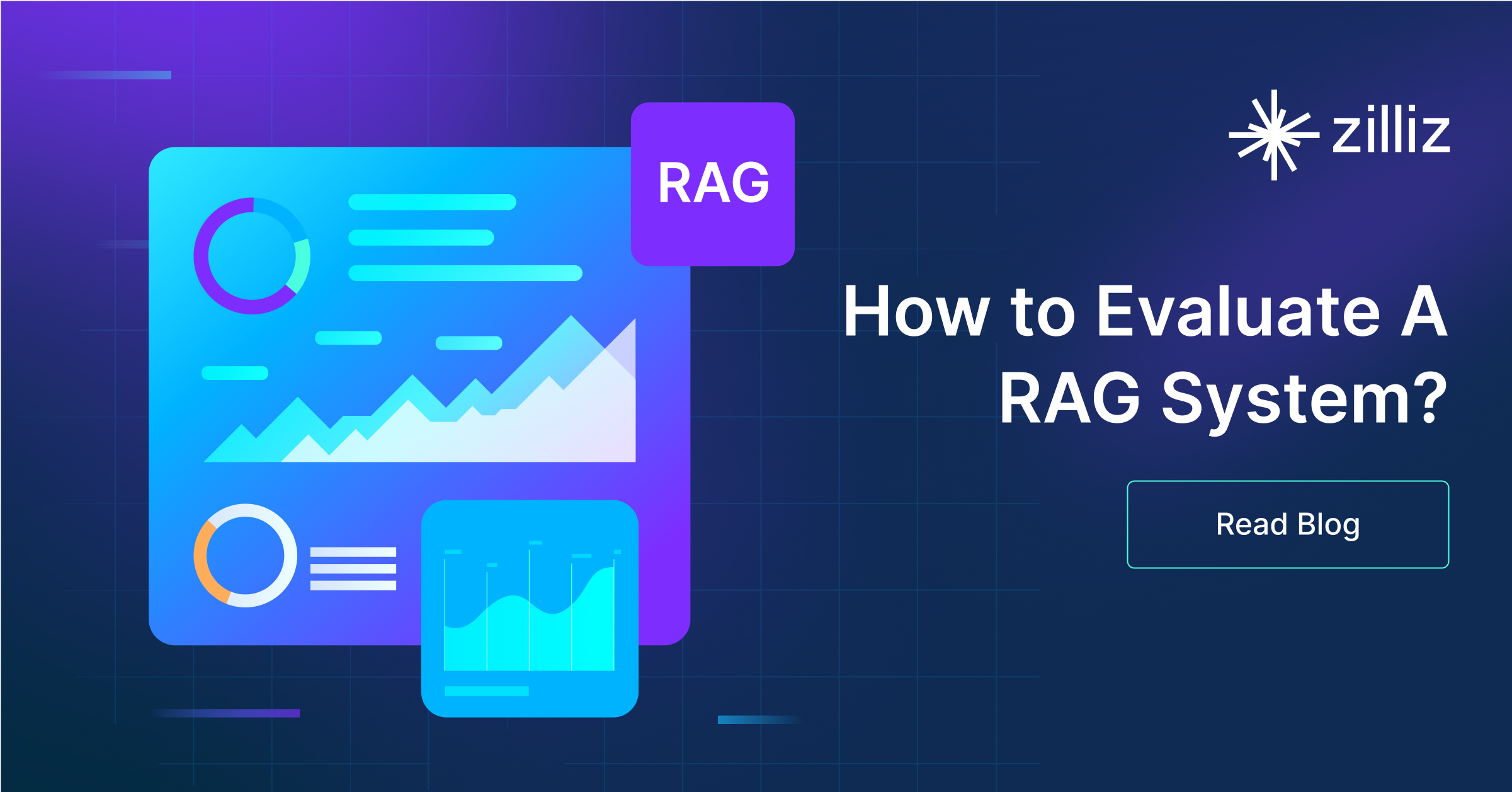Build RAG Chatbot with LangChain, Milvus, NVIDIA BGE-M3, and Google Vertex AI text-embedding-005
Introduction to RAG
Retrieval-Augmented Generation (RAG) is a game-changer for GenAI applications, especially in conversational AI. It combines the power of pre-trained large language models (LLMs) like OpenAI’s GPT with external knowledge sources stored in vector databases such as Milvus and Zilliz Cloud, allowing for more accurate, contextually relevant, and up-to-date response generation. A RAG pipeline usually consists of four basic components: a vector database, an embedding model, an LLM, and a framework.
Key Components We'll Use for This RAG Chatbot
This tutorial shows you how to build a simple RAG chatbot in Python using the following components:
- LangChain: An open-source framework that helps you orchestrate the interaction between LLMs, vector stores, embedding models, etc, making it easier to integrate a RAG pipeline.
- Milvus: An open-source vector database optimized to store, index, and search large-scale vector embeddings efficiently, perfect for use cases like RAG, semantic search, and recommender systems. If you hate to manage your own infrastructure, we recommend using Zilliz Cloud, which is a fully managed vector database service built on Milvus and offers a free tier supporting up to 1 million vectors.
- NVIDIA BGE-M3: The NVIDIA BGE-M3 is a state-of-the-art language model designed to generate human-like text, making it suitable for a variety of natural language processing tasks. Its strength lies in its ability to produce coherent and contextually relevant responses, making it ideal for applications in chatbots, content creation, and virtual assistants. BGE-M3 excels in understanding nuanced input, providing users with highly accurate and engaging interactions, thereby enhancing automated communication systems across multiple industries.
- Google Vertex AI text-embedding-005: This model produces high-quality text embeddings, facilitating nuanced semantic understanding and similarity comparisons. Its strength lies in efficiency and scalability, making it ideal for tasks like information retrieval, recommendation systems, and multi-language support. Perfect for developers seeking to enhance their applications with powerful contextual insights.
By the end of this tutorial, you’ll have a functional chatbot capable of answering questions based on a custom knowledge base.
Note: Since we may use proprietary models in our tutorials, make sure you have the required API key beforehand.
Step 1: Install and Set Up LangChain
%pip install --quiet --upgrade langchain-text-splitters langchain-community langgraph
Step 2: Install and Set Up NVIDIA BGE-M3
pip install -qU "langchain-nvidia-ai-endpoints"
import getpass
import os
if not os.environ.get("NVIDIA_API_KEY"):
os.environ["NVIDIA_API_KEY"] = getpass.getpass("Enter API key for NVIDIA: ")
from langchain.chat_models import init_chat_model
llm = init_chat_model("baai/bge-m3", model_provider="nvidia")
Step 3: Install and Set Up Google Vertex AI text-embedding-005
pip install -qU langchain-google-vertexai
from langchain_google_vertexai import VertexAIEmbeddings
embeddings = VertexAIEmbeddings(model="text-embedding-005")
Step 4: Install and Set Up Milvus
pip install -qU langchain-milvus
from langchain_milvus import Milvus
vector_store = Milvus(embedding_function=embeddings)
Step 5: Build a RAG Chatbot
Now that you’ve set up all components, let’s start to build a simple chatbot. We’ll use the Milvus introduction doc as a private knowledge base. You can replace it with your own dataset to customize your RAG chatbot.
import bs4
from langchain import hub
from langchain_community.document_loaders import WebBaseLoader
from langchain_core.documents import Document
from langchain_text_splitters import RecursiveCharacterTextSplitter
from langgraph.graph import START, StateGraph
from typing_extensions import List, TypedDict
# Load and chunk contents of the blog
loader = WebBaseLoader(
web_paths=("https://milvus.io/docs/overview.md",),
bs_kwargs=dict(
parse_only=bs4.SoupStrainer(
class_=("doc-style doc-post-content")
)
),
)
docs = loader.load()
text_splitter = RecursiveCharacterTextSplitter(chunk_size=1000, chunk_overlap=200)
all_splits = text_splitter.split_documents(docs)
# Index chunks
_ = vector_store.add_documents(documents=all_splits)
# Define prompt for question-answering
prompt = hub.pull("rlm/rag-prompt")
# Define state for application
class State(TypedDict):
question: str
context: List[Document]
answer: str
# Define application steps
def retrieve(state: State):
retrieved_docs = vector_store.similarity_search(state["question"])
return {"context": retrieved_docs}
def generate(state: State):
docs_content = "\n\n".join(doc.page_content for doc in state["context"])
messages = prompt.invoke({"question": state["question"], "context": docs_content})
response = llm.invoke(messages)
return {"answer": response.content}
# Compile application and test
graph_builder = StateGraph(State).add_sequence([retrieve, generate])
graph_builder.add_edge(START, "retrieve")
graph = graph_builder.compile()
Test the Chatbot
Yeah! You've built your own chatbot. Let's ask the chatbot a question.
response = graph.invoke({"question": "What data types does Milvus support?"})
print(response["answer"])
Example Output
Milvus supports various data types including sparse vectors, binary vectors, JSON, and arrays. Additionally, it handles common numerical and character types, making it versatile for different data modeling needs. This allows users to manage unstructured or multi-modal data efficiently.
Optimization Tips
As you build your RAG system, optimization is key to ensuring peak performance and efficiency. While setting up the components is an essential first step, fine-tuning each one will help you create a solution that works even better and scales seamlessly. In this section, we’ll share some practical tips for optimizing all these components, giving you the edge to build smarter, faster, and more responsive RAG applications.
LangChain optimization tips
To optimize LangChain, focus on minimizing redundant operations in your workflow by structuring your chains and agents efficiently. Use caching to avoid repeated computations, speeding up your system, and experiment with modular design to ensure that components like models or databases can be easily swapped out. This will provide both flexibility and efficiency, allowing you to quickly scale your system without unnecessary delays or complications.
Milvus optimization tips
Milvus serves as a highly efficient vector database, critical for retrieval tasks in a RAG system. To optimize its performance, ensure that indexes are properly built to balance speed and accuracy; consider utilizing HNSW (Hierarchical Navigable Small World) for efficient nearest neighbor search where response time is crucial. Partitioning data based on usage patterns can enhance query performance and reduce load times, enabling better scalability. Regularly monitor and adjust cache settings based on query frequency to avoid latency during data retrieval. Employ batch processing for vector insertions, which can minimize database lock contention and enhance overall throughput. Additionally, fine-tune the model parameters by experimenting with the dimensionality of the vectors; higher dimensions can improve retrieval accuracy but may increase search time, necessitating a balance tailored to your specific use case and hardware infrastructure.
NVIDIA BGE-M3 optimization tips
To optimize the NVIDIA BGE-M3 in a Retrieval-Augmented Generation (RAG) setup, ensure that your data retrieval system is finely tuned for reusability and relevance—consider implementing a caching mechanism to store frequently accessed documents. Additionally, experimenting with the retrieval parameters, such as k-value in nearest neighbor searches, can yield better results for your specific tasks. Utilize mixed-precision training to enhance throughput and reduce memory usage without compromising model performance. Regularly monitor and fine-tune hyperparameters through validation tests to achieve the best balance between speed and accuracy. Lastly, leverage NVIDIA's TensorRT or ONNX optimization tools for model deployment to maximize inference efficiency.
Google Vertex AI text-embedding-005 optimization tips
Google Vertex AI text-embedding-005 is a high-performing model, optimized for generating context-aware embeddings in RAG systems. Improve retrieval accuracy by leveraging a two-stage search process: first, filter using keyword matching, then re-rank results based on embedding similarity. Use batch embedding generation to minimize latency and streamline processing. When managing large datasets, implement hierarchical vector indexing to optimize memory usage and retrieval speed. Fine-tune embeddings with domain-specific data to improve retrieval relevance for niche use cases. For high-throughput systems, employ a distributed search infrastructure to scale efficiently while maintaining low query response times. Regularly evaluate the embeddings’ relevance and update the model with new training data for optimal performance.
By implementing these tips across your components, you'll be able to enhance the performance and functionality of your RAG system, ensuring it’s optimized for both speed and accuracy. Keep testing, iterating, and refining your setup to stay ahead in the ever-evolving world of AI development.
RAG Cost Calculator: A Free Tool to Calculate Your Cost in Seconds
Estimating the cost of a Retrieval-Augmented Generation (RAG) pipeline involves analyzing expenses across vector storage, compute resources, and API usage. Key cost drivers include vector database queries, embedding generation, and LLM inference.
RAG Cost Calculator is a free tool that quickly estimates the cost of building a RAG pipeline, including chunking, embedding, vector storage/search, and LLM generation. It also helps you identify cost-saving opportunities and achieve up to 10x cost reduction on vector databases with the serverless option.
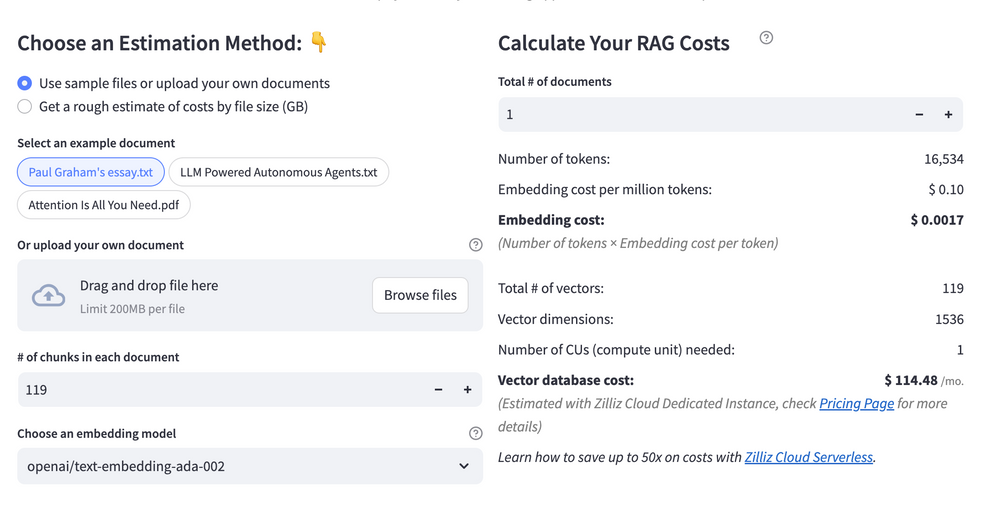 Calculate your RAG cost
Calculate your RAG cost
What Have You Learned?
By now, you’ve unlocked the magic of building a RAG system from the ground up! You’ve learned how LangChain acts as the glue that ties everything together, orchestrating workflows and making it easy to connect your LLM (like Google Vertex AI’s text-embedding-005) with powerful tools like Milvus, the vector database that stores and retrieves your data at lightning speed. You saw how NVIDIA’s BGE-M3 embedding model transforms raw text into rich, semantic vectors, giving your system the ability to “understand” context and nuance. This powerhouse trio—framework, database, embedding model—works in harmony to create a RAG pipeline that’s both intelligent and scalable. You even discovered how to optimize performance, like tuning retrieval parameters or balancing cost-efficiency with accuracy, and how tools like the free RAG cost calculator can help you plan smarter.
But this is just the beginning! You’ve seen firsthand how these components empower you to build applications that answer questions, summarize content, or personalize interactions with real-world data. Now it’s your turn to experiment, tweak, and innovate. Maybe you’ll fine-tune embeddings for a specific domain, experiment with hybrid search strategies in Milvus, or integrate other LLMs for even more flexibility. Remember, every optimization you apply and every creative idea you explore brings your projects closer to standing out in the AI landscape. So grab your code editor, fire up your creativity, and start building—your next breakthrough RAG application is waiting to happen! The future of intelligent systems is in your hands, and you’ve got all the tools to shape it. Let’s go! 🚀
Further Resources
🌟 In addition to this RAG tutorial, unleash your full potential with these incredible resources to level up your RAG skills.
- How to Build a Multimodal RAG | Documentation
- How to Enhance the Performance of Your RAG Pipeline
- Graph RAG with Milvus | Documentation
- How to Evaluate RAG Applications - Zilliz Learn
- Generative AI Resource Hub | Zilliz
We'd Love to Hear What You Think!
We’d love to hear your thoughts! 🌟 Leave your questions or comments below or join our vibrant Milvus Discord community to share your experiences, ask questions, or connect with thousands of AI enthusiasts. Your journey matters to us!
If you like this tutorial, show your support by giving our Milvus GitHub repo a star ⭐—it means the world to us and inspires us to keep creating! 💖
- Introduction to RAG
- Key Components We'll Use for This RAG Chatbot
- Step 1: Install and Set Up LangChain
- Step 2: Install and Set Up NVIDIA BGE-M3
- Step 3: Install and Set Up Google Vertex AI text-embedding-005
- Step 4: Install and Set Up Milvus
- Step 5: Build a RAG Chatbot
- Optimization Tips
- RAG Cost Calculator: A Free Tool to Calculate Your Cost in Seconds
- What Have You Learned?
- Further Resources
- We'd Love to Hear What You Think!
Content
Vector Database at Scale
Zilliz Cloud is a fully-managed vector database built for scale, perfect for your RAG apps.
Try Zilliz Cloud for Free